Navigating the Digital Frontier: A Comprehensive Guide to Technology ETFs
Are you looking to invest in the exciting, ever-evolving world of technology but feel overwhelmed by the sheer number of companies and rapid changes? The technology sector has been an undeniable engine of global economic growth and investment returns for decades, transforming everything from communication to commerce. For investors seeking to capitalize on this dynamic industry, Technology Exchange-Traded Funds (ETFs) have emerged as a cornerstone, offering diversified exposure to innovation without the arduous task of individual stock picking.
In this guide, we will explore the landscape of tech ETFs, detailing their construction, highlighting key funds in both U.S. and Australian markets, and outlining strategic approaches for integrating them into your portfolio. Our goal is to empower you to capture future growth while managing the inherent risks, simplifying complex ideas to make them accessible for everyone.
Understanding Technology ETFs: Your Gateway to Innovation
So, what exactly are Technology ETFs, and why should you consider them for your investment portfolio? Simply put, a Technology ETF is an investment fund that holds a basket of stocks from companies primarily involved in the technology sector. Think of it like a neatly packaged collection of various tech companies, giving you instant diversification across many innovators with a single investment.
These funds provide diversified exposure to the dynamic tech sector, mitigating some of the risks associated with picking individual, volatile technology stocks. Instead of researching and buying shares in Apple Inc. (AAPL), Microsoft Corp. (MSFT), and Nvidia Corp. (NVDA) individually, a tech ETF might hold all of them, along with dozens or even hundreds of other tech firms, in one convenient package. This built-in diversification is a significant advantage, especially for beginners.
Technology ETFs come in various forms, catering to different investment goals and risk appetites:
- Broad-based Tech ETFs: These funds aim to capture the overall performance of the technology sector by investing across a wide range of tech companies. They are often market-cap weighted, meaning larger companies like Apple and Microsoft have a greater influence on the fund’s performance.
- Thematic Tech ETFs: These focus on specific, high-growth sub-sectors or emerging trends within technology. Examples include Cloud Computing ETFs, Semiconductor ETFs, Cybersecurity ETFs, and Artificial Intelligence (AI) ETFs. They offer concentrated exposure to particular niches, but often come with higher volatility.
- Niche/Leveraged ETFs: These are highly specialized funds. Niche ETFs might focus on a very specific segment (e.g., blockchain), while leveraged ETFs aim to magnify returns (or losses) by using financial derivatives. We generally advise caution with leveraged ETFs due to their increased risk and complexity, especially for those new to investing.
The beauty of ETFs is their flexibility. They trade on stock exchanges just like individual stocks, meaning you can buy and sell them throughout the trading day. This liquidity, combined with their diversified nature, makes them an attractive option for investors looking to participate in the tech revolution.
When considering Technology ETFs, several factors are worth noting:
- Immediate diversification across a multitude of tech companies, reducing single-stock risk.
- Lower expense ratios compared to actively managed mutual funds, leading to cost-efficient investing.
- Ease of trading on stock exchanges throughout the day, offering flexibility for investors.
Deconstructing Tech ETFs: Indexes, Classifications, and Weighting Strategies
To truly understand Technology ETFs, we need to look under the hood at how they are constructed. Most ETFs are built upon rules-based underlying indexes, which dictate exactly which stocks the fund holds and in what proportions. But how do we define “technology” in the first place, and how does that impact an ETF’s holdings?
One of the most important aspects to grasp is the role of classification systems, such as the Global Industry Classification Standard (GICS). You might assume that all major tech companies are neatly categorized under “Information Technology,” but that’s not always the case. For example, GICS places giants like Alphabet Inc. (GOOGL), the parent company of Google, and Meta Platforms Inc. (META), formerly Facebook, into the “Communication Services” sector, not “Information Technology.” This distinction significantly influences the composition of broad tech ETFs that adhere strictly to GICS definitions.
For instance, an ETF tracking the S&P 500 Information Technology Index (like XLK) will not include Alphabet or Meta, even though many investors consider them core tech players. Other indexes, like those from FTSE Russell or specific thematic index providers, might have different definitions, leading to varied holdings across similar-sounding tech ETFs. This is why digging into an ETF’s prospectus to understand its underlying index is crucial.
Beyond classification, weighting methodologies also play a significant role:
- Market-Cap Weighted: This is the most common method. Companies with larger market capitalizations (total value of outstanding shares) receive a higher weighting in the ETF. This means the performance of dominant large-cap companies like Apple and Microsoft heavily influences the fund’s overall returns. Most broad-based ETFs, such as VGT and FTEC, use this approach. While it ensures exposure to market leaders, it also introduces concentration risk.
- Equal-Weighted: In contrast, an equal-weighted ETF (like Invesco S&P 500 Equal Weight Technology ETF, RSPT) allocates the same percentage to each constituent stock, regardless of its size. This gives smaller companies within the index a more significant impact on the fund’s performance and can offer a different return profile compared to market-cap weighted funds.
Finally, we consider management style. Most broad-based tech ETFs are passively managed, meaning they simply aim to track a specific index. This approach typically results in lower expense ratios. However, some ETFs are actively managed, like the popular ARK Innovation ETF (ARKK) led by Catherine Wood. Actively managed funds give portfolio managers discretion to select stocks and time the market, aiming to outperform their benchmark. This often comes with higher management fees and can lead to more volatile returns, as success depends heavily on the manager’s skill and investment philosophy.
A World of Choice: Key Technology ETFs Across Markets and Themes
With a clear understanding of what Tech ETFs are and how they’re built, let’s explore some prominent options available, spanning broad market exposure in the U.S. and Australia, as well as specialized funds targeting high-growth themes like AI, cybersecurity, and semiconductors.
Major U.S. Tech ETFs: Broad Exposure
For investors seeking comprehensive exposure to the U.S. technology sector, several large, liquid, and low-cost options stand out:
- Technology Select Sector SPDR Fund (XLK): This ETF tracks the Technology Select Sector Index, focusing on the information technology segment of the S&P 500. It’s heavily concentrated in Apple Inc. and Microsoft Corp. due to its market-cap weighting and GICS adherence.
- Vanguard Information Technology ETF (VGT): Tracking the MSCI US Investable Market Information Technology 25/50 Index, VGT offers slightly broader exposure than XLK but is still dominated by large-cap tech. It’s known for its low expense ratio.
- Fidelity MSCI Information Technology Index ETF (FTEC): Similar to VGT, FTEC also tracks an MSCI index, providing comparable broad exposure to U.S. tech with competitive costs.
- Invesco QQQ Trust (QQQ): While not a pure “tech” ETF by GICS standards, QQQ tracks the NASDAQ-100 Index, which is heavily weighted towards the largest non-financial companies listed on the NASDAQ, including many prominent tech and growth stocks like Amazon.com Inc. (AMZN) and Nvidia Corp. (NVDA).
To provide a clearer overview, here’s a comparative summary of some prominent U.S. broad-based technology ETFs:
| Ticker | Fund Name | Primary Index | Key Holdings | Expense Ratio (approx.) |
|---|---|---|---|---|
| XLK | Technology Select Sector SPDR Fund | Technology Select Sector Index (S&P 500 IT) | Apple, Microsoft | 0.10% |
| VGT | Vanguard Information Technology ETF | MSCI US Investable Market Information Technology 25/50 Index | Apple, Microsoft, Nvidia | 0.10% |
| FTEC | Fidelity MSCI Information Technology Index ETF | MSCI US IMI Information Technology Index | Apple, Microsoft, Nvidia | 0.08% |
| QQQ | Invesco QQQ Trust | NASDAQ-100 Index | Apple, Microsoft, Amazon, Nvidia, Meta | 0.20% |
Each of these funds offers robust exposure to the technology sector, though their specific index methodologies and top holdings can lead to subtle differences in performance and risk profile. It is always recommended to review the latest fund documents for current expense ratios and holdings.
Industry-Specific & Thematic U.S. Tech ETFs
If you have a conviction about a particular tech sub-sector, thematic ETFs offer targeted exposure:
- Semiconductors: Funds like iShares Semiconductor ETF (SOXX) and VanEck Semiconductor ETF (SMH) focus on companies involved in chip design and manufacturing, such as Nvidia, Intel Corp. (INTC), and Taiwan Semiconductor Manufacturing Co. (TSMC).
- Cloud Computing: The First Trust Cloud Computing ETF (SKYY) invests in companies providing cloud infrastructure and software services.
- Cybersecurity: Amplify Cybersecurity ETF (HACK) and First Trust Nasdaq Cybersecurity ETF (CIBR) target firms providing digital security solutions.
- Artificial Intelligence & Robotics: Global X Robotics & Artificial Intelligence ETF (BOTZ) and iShares Future AI & Tech ETF (ARTY) capitalize on the burgeoning fields of AI and automation.
- Global/International Exposure: For those looking beyond the U.S., iShares Global Tech ETF (IXN) includes non-U.S. tech giants, while KraneShares China Internet ETF (KWEB) offers exposure to fast-growing, but volatile, emerging market tech, particularly in China.
For investors interested in targeted exposure to high-growth areas within technology, thematic ETFs provide specialized options, each with its own focus and risk profile:
| Ticker | Theme | Example Funds | Focus Areas | Typical Risk Level |
|---|---|---|---|---|
| SOXX, SMH | Semiconductors | iShares Semiconductor ETF, VanEck Semiconductor ETF | Chip design, manufacturing, equipment | Medium to High |
| SKYY | Cloud Computing | First Trust Cloud Computing ETF | Cloud infrastructure, software as a service (SaaS) | Medium |
| HACK, CIBR | Cybersecurity | Amplify Cybersecurity ETF, First Trust Nasdaq Cybersecurity ETF | Network security, data protection, threat intelligence | Medium |
| BOTZ, ARTY | AI & Robotics | Global X Robotics & Artificial Intelligence ETF, iShares Future AI & Tech ETF | Artificial intelligence, automation, industrial robotics | High |
These thematic funds can be powerful tools for investors with strong convictions about specific technological advancements, but they generally carry higher volatility and concentration risk compared to broad-based tech ETFs.
The Australian Tech ETF Landscape
The Australian share market has a relatively small domestic allocation to technology companies (around 3%) compared to the U.S. market’s nearly 27%. This makes international tech ETFs crucial for Australian investors seeking meaningful tech exposure. Here are some prominent ASX-listed options:
| Ticker | Name | Focus | Expense Ratio | Key Characteristics |
|---|---|---|---|---|
| NDQ | BetaShares NASDAQ 100 ETF | Global Large-Cap Tech & Growth | 0.48% | Largest & most liquid ASX tech ETF. Tracks NASDAQ-100. Strong returns. |
| ASIA | BetaShares Asia Technology Tigers ETF | Asian Tech & Internet | 0.67% | Focuses on Asian markets (e.g., China’s Tencent, Alibaba). Higher cost, recent rebound. |
| TECH | Global X Morningstar Global Technology ETF | Global Technology Moat Focus | 0.59% | Invests in companies with strong competitive advantages (“moats”). |
| FANG | Global X FANG+ ETF | Global Mega-Cap Tech | 0.35% | Concentrated in 10 leading U.S. tech and internet companies from NYSE FANG+ index. High volatility. |
Thematic ASX ETFs also exist (e.g., SEMI for semiconductors, ROBO for robotics), but they are often smaller, less liquid, and generally more volatile compared to their U.S. counterparts or broader funds like NDQ. While they offer targeted exposure, investors are cautioned against overexposure to these niche funds due to their susceptibility to greater volatility.
Navigating the Ups and Downs: Performance, Volatility, and Costs of Tech ETFs
Investing in Technology ETFs can be incredibly rewarding, but it’s essential to understand their performance characteristics, inherent risks, and associated costs. What goes up can also come down, and the tech sector is no stranger to volatility.
Performance & Volatility
Over the past 10-15 years, tech ETFs have generally outperformed the broader market, driven by strong earnings growth and expanding valuations of innovative companies. However, this impressive performance often comes with significant volatility. The tech sector is highly sensitive to economic shifts and investor sentiment. For example: 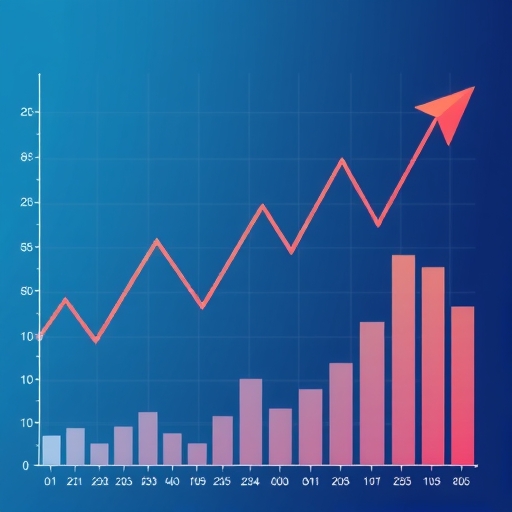
Recession Fears: During periods of economic uncertainty, investors often flee growth stocks, which are prevalent in tech, leading to steeper drawdowns. 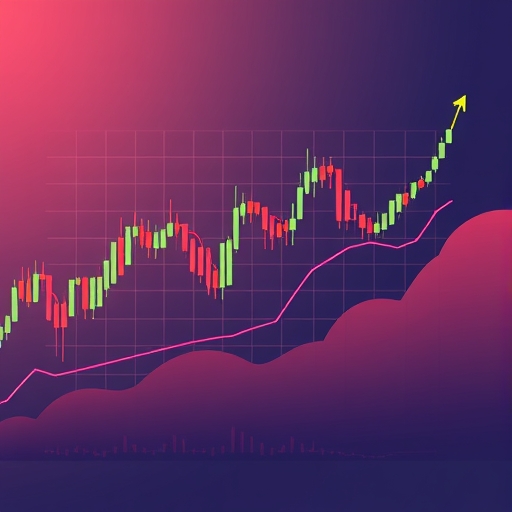
Rising Interest Rates: Higher interest rates can negatively impact tech valuations because they discount future earnings more aggressively, making today’s high growth less attractive. The steep drawdowns of 2022 are a prime example of this effect. 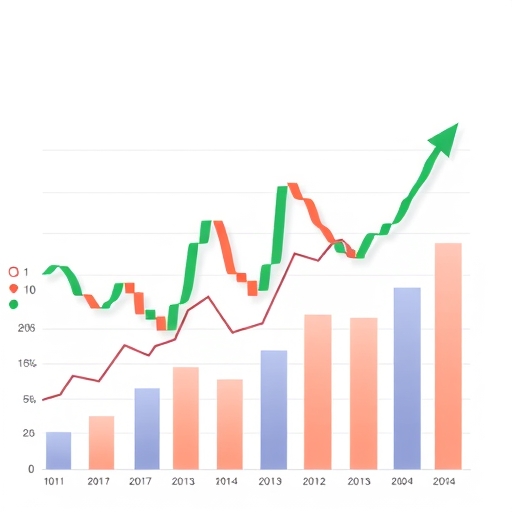
Increased Regulation: Regulatory scrutiny, particularly for “big tech” companies, can introduce uncertainty and potential fines or restrictions, affecting their stock prices and, consequently, tech ETF performance. 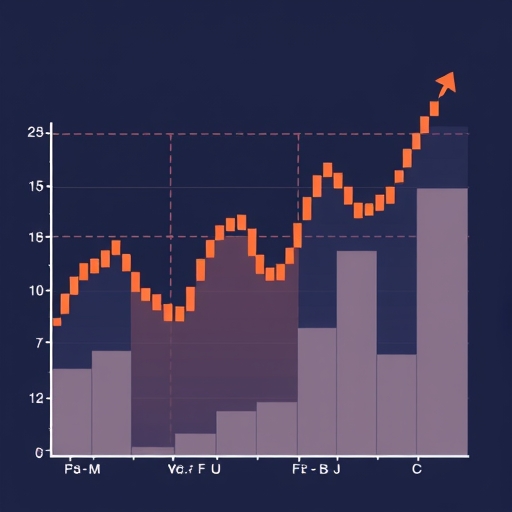
Remember the dot-com bubble burst in 2000? That’s a stark reminder of the potential for significant downturns in the sector. While today’s tech landscape is different, concentration risk remains a key concern, especially in market-cap weighted funds. An ETF like XLK, heavily weighted towards Apple and Microsoft, means its performance is heavily influenced by just two companies. If these giants falter, the entire fund can suffer.
Understanding Costs
When investing in ETFs, two primary types of costs affect your overall returns:
- Expense Ratios (Management Fees): This is an annual fee charged as a percentage of your investment. Broad-based tech ETFs are typically very cheap, often under 0.1% per year (e.g., VGT, FTEC). However, thematic or actively managed ETFs tend to be more expensive, with expense ratios ranging from 0.5% to 0.75% or even higher for some niche funds. Always check this before investing, as even small differences can compound over time.
- Slippage: This is an often-overlooked trading cost. Slippage represents the cost incurred by crossing the bid-ask spread when buying or selling an ETF. It’s the difference between the price you want to pay and the price you actually get. For highly liquid ETFs, slippage is usually minimal, but for smaller, less liquid thematic ETFs, it can add up and eat into your returns.
Being aware of these costs is crucial for making informed investment decisions and maximizing your potential returns over the long term. We encourage you to review the prospectus of any ETF you consider to fully understand its fee structure.
To summarize, investing in Technology ETFs offers distinct advantages alongside important considerations:
| Aspect | Key Benefits | Potential Risks |
|---|---|---|
| Diversification | Instant exposure to many companies; reduced impact from single stock underperformance. | Sector-specific concentration risk; market-cap weighting can lead to reliance on a few large companies. |
| Cost Efficiency | Generally low expense ratios for broad-based funds; no active management fees (for passive ETFs). | Higher fees for thematic/actively managed ETFs; slippage costs for less liquid funds. |
| Accessibility & Liquidity | Easy to buy/sell on exchanges; democratizes access to complex tech sectors. | High volatility due to tech’s growth-oriented nature; sensitivity to economic downturns and interest rate changes. |
| Growth Potential | Capitalizes on innovation and transformative technologies; historically strong returns. | Potential for significant drawdowns during market corrections; rapid technological shifts can make some niches obsolete. |
A balanced approach involves weighing these benefits against the risks and ensuring that any tech ETF allocation aligns with your overall investment goals and risk tolerance.
Mastering Your Portfolio: Strategic Use and Diversification with Tech ETFs
So, how can you effectively integrate Technology ETFs into your broader investment strategy? The key lies in understanding their role and ensuring they contribute to a well-diversified portfolio, rather than creating overexposure to a single, volatile sector. Diversification isn’t just a buzzword; it’s your best friend in risk management.
When and How to Use Tech ETFs
Tech ETFs can serve several purposes within your investment portfolio:
- Core Growth Allocation: For many investors, especially those with a long-term horizon, a broad-based tech ETF can form a core part of their growth allocation. It provides steady exposure to innovation and market-leading companies.
- Tactical Sector Tilts: If you believe a specific tech sub-sector, like AI or semiconductors, is poised for outperformance, you might use a thematic ETF for a “tactical tilt” – allocating a smaller portion of your portfolio to capture that specific opportunity.
- Thematic Bets: For those with high conviction in disruptive innovation, thematic ETFs offer a way to invest in emerging trends like quantum computing or the metaverse. However, these are typically considered “satellite” investments, meaning they should be a smaller, higher-risk component of your overall portfolio.
For beginners, prioritizing tech ETFs over individual technology stocks is generally recommended. Why? Because ETFs offer built-in diversification, mitigating the significant risks associated with individual stock picking. Research consistently shows that average investors often underperform the market due to emotional decision-making and insufficient diversification when buying individual stocks. An ETF does the heavy lifting for you.
The Importance of Diversification
While technology ETFs offer diversification within the tech sector, it’s vital to remember that they are still concentrated in one industry. True diversification means having a mix of different asset classes and sectors in your portfolio. To avoid overexposure to potential tech crashes, your tech ETF holdings should ideally form only a portion of a broader portfolio alongside other assets like bonds, real estate, and even gold.
Think of it this way: if your entire portfolio is made up of tech stocks, you’re putting all your eggs in one very exciting, but potentially fragile, basket. By spreading your investment capital across various sectors and asset types, you can cushion the blow if one area experiences a downturn. A balanced asset allocation is key to long-term wealth creation and sound risk management.
Leading financial advisors, like Stockspot, often advocate for a diversified approach, suggesting that thematic ETFs, while exciting, should only constitute a small percentage (e.g., 5-10%) of your overall portfolio. This strategy allows you to participate in high-growth areas without jeopardizing your entire financial plan.
Conclusion
Technology ETFs present a compelling and efficient avenue for investors to participate in one of the global economy’s most vibrant and influential sectors. By providing diversified access to innovative companies, they offer a balanced approach that mitigates many of the risks often associated with volatile individual tech stocks. We’ve explored how these funds are constructed, highlighted key players in the U.S. and Australian markets, and discussed the critical factors of performance, volatility, and costs.
While the potential for substantial growth remains a significant draw, successful investment hinges on a thorough understanding of a fund’s underlying strategy, its associated costs, and the broader economic forces at play. Thoughtfully integrating tech ETFs as part of a well-diversified portfolio can empower you to harness the power of technological advancement for long-term wealth creation, allowing you to ride the wave of innovation with greater confidence and reduced individual stock risk.
Frequently Asked Questions (FAQ)
Q: What is a Technology ETF?
A: A Technology ETF is an investment fund that holds a diversified basket of stocks from companies primarily involved in the technology sector, offering investors exposure to innovation with a single investment.
Q: What are the main types of Technology ETFs?
A: The main types include broad-based Tech ETFs that cover the entire sector, thematic Tech ETFs that focus on specific sub-sectors like AI or semiconductors, and niche/leveraged ETFs which are highly specialized and often carry higher risk.
Q: How do Technology ETFs help with diversification?
A: Technology ETFs provide built-in diversification by investing in many different tech companies, which helps to mitigate the risk associated with picking individual, volatile technology stocks. However, true portfolio diversification requires combining tech ETFs with other asset classes and sectors.
Disclaimer: This article is for informational and educational purposes only and does not constitute financial advice. Investing in Exchange-Traded Funds (ETFs) involves risks, including the potential loss of principal. Past performance is not indicative of future results. Always consult with a qualified financial professional before making any investment decisions.


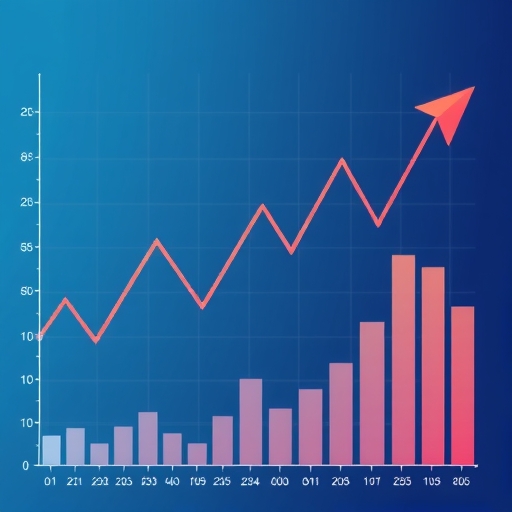
No responses yet